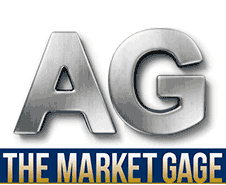
We start the week with markets closed all over Europe for Easter Monday.
Far East buying in Gold seen overnight as the U.S. Dollar declines against other world currencies. The price of Gold still floating in its most recent range keeping the Wall Street day traders idle. Gold chart technicians still hoping for a rebound in the price over the $1,350 area, but they say the price must stay above that level, and build a base there, before we can see a break out. They are not too confident it seems, and I can’t blame them, because we have been up in that area a couple of times and could not hold those levels. But one just has to read our feature story below to see why a long term investment in the yellow metal could be a wise choice.
But before we get to that story there is a story in the Silver market today.
The price of Silver having a better day up over two percent. Traders claim the increase
in Silver today is due to heavy activity in the Gold / Silver ratio. One Wall Street Trader
indicated that the price of Silver has been oversold for many months now and with the
Equity markets in a correction mode, there are investors out there that see Silver as
an alternative investment because the price has been under pressure for so very long.
Falling on Deaf Ears…Or Maybe Debt Ears
A Gallop Poll taken back in 2011 asked Americans: What are you more likely to ask of your representatives in Congress? To vote against, rather than for an increase in the Federal debt? Forty two percent said stop any further increases, twenty two percent said its ok to raise the debt ceiling and a whopping 35 percent had no opinion. In other words, the thirty five percent had no knowledge what this really meant to the future of our great nation.
Well if you don’t remember, back in 2011 the U.S. Debt was standing at 14 trillion dollars and consumer debt was reported at 11 trillion dollars. The Fed fund rate was .25 percent, virtually zero. Cheap money abounded.
Today our country’s debt is over 21 trillion dollars (and rising), consumer debt is at an all-time high at $13.5 trillion dollars and the fed fund rate is at 1.75 percent.
Obviously our government leaders didn’t fair too well in balancing their books, our debt is up 51 percent from 2011. Consumers , who did a little better job because they were still feeling the effects of the last financial crisis, had a debt increase of 23 percent.
So the question remains where do we go from here? AND let’s not forget we “just reduced taxes.”
According to the Congressional budget office’s long–term estimate, “EVERY PENNY” of the federal budget will go to interest on the debt and entitlement spending by the year 2025. That means no money for national defense. No money for national security. No money for healthcare, infrastructure and on and on.
So I ask you, where are we headed and where do you think investors who have a long term vision should put their money?
Going forward, can anyone argue that an investment in Gold, one of the world’s oldest assets, will be a bad idea?
Just look at the shape we are in.
Have a wonderful Monday.
Disclaimer: This editorial has been prepared by Walter Pehowich of Dillon Gage Metals for information and thought-provoking purposes only and does not purport to predict or forecast actual results. This editorial opinion is not to be construed as investment advice or as a recommendation regarding any particular security, commodity or course of action. Opinions expressed herein cannot be attributable to Dillon Gage. Reasonable people may disagree about the events discussed or opinions expressed herein. In the event any of the assumptions used herein do not come to fruition, results are likely to vary substantially. It is not a solicitation or advice to make any exchange in commodities, securities or other financial instruments. No part of this editorial may be reproduced in any manner, in whole or in part, without the prior written permission of Dillon Gage Metals. Dillon Gage Metals shall not have any liability for any damages of any kind whatsoever relating to this editorial. You should consult your advisers with respect to these areas. By posting this editorial, you acknowledge, understand and accept this disclaimer.
